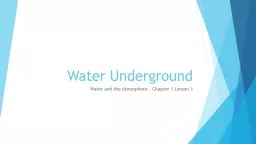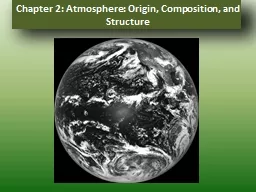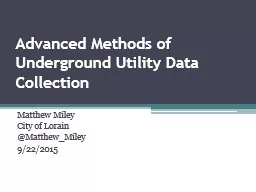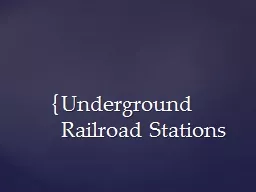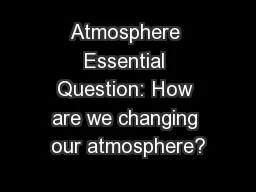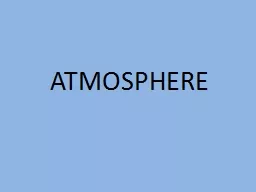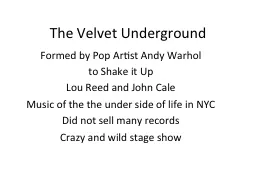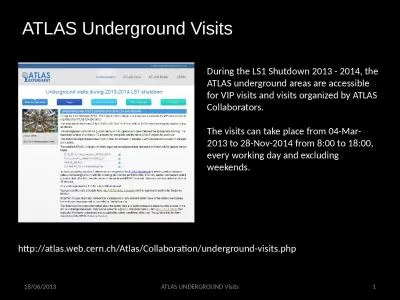PPT-Water Underground Water and the Atmosphere - Chapter 1 Lesson 3
Author : debby-jeon | Published Date : 2018-12-05
Objectives Describe how water moves through underground layers of soil and rock Explain how people obtain water from an aquifer We are covering NGSS MSESS22 Construct
Presentation Embed Code
Download Presentation
Download Presentation The PPT/PDF document "Water Underground Water and the Atmosphe..." is the property of its rightful owner. Permission is granted to download and print the materials on this website for personal, non-commercial use only, and to display it on your personal computer provided you do not modify the materials and that you retain all copyright notices contained in the materials. By downloading content from our website, you accept the terms of this agreement.
Water Underground Water and the Atmosphere - Chapter 1 Lesson 3: Transcript
Download Rules Of Document
"Water Underground Water and the Atmosphere - Chapter 1 Lesson 3"The content belongs to its owner. You may download and print it for personal use, without modification, and keep all copyright notices. By downloading, you agree to these terms.
Related Documents

